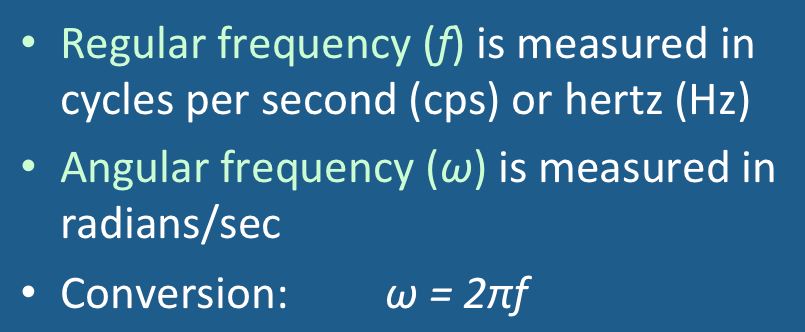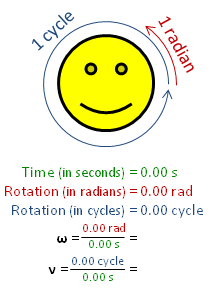"Regular" and angular frequencies are alternative units of measurement for describing how fast an object rotates or a sine wave oscillates.
|
Regular or linear frequency (f), sometimes also denoted by the Greek symbol "nu" (ν), counts the number of complete oscillations or rotations in a given period of time. Its units are therefore cycles per second (cps), also called hertz (Hz).
Angular frequency (ω), also known as radial or circular frequency, measures angular displacement per unit time. Its units are therefore degrees (or radians) per second. |
|
|
Angular frequency (in radians) is larger than regular frequency (in Hz) by a factor of 2π:
ω = 2πf
Hence, 1 Hz ≈ 6.28 rad/sec. Since 2π radians = 360°, 1 radian ≈ 57.3°.
The YouTube video (left) may clarify some of these concepts. |
Advanced Discussion (show/hide)»
No supplementary material yet. Check back soon!
Related Questions
I know I was taught this in school, but can you briefly review the difference between phase and frequency?
I know I was taught this in school, but can you briefly review the difference between phase and frequency?

